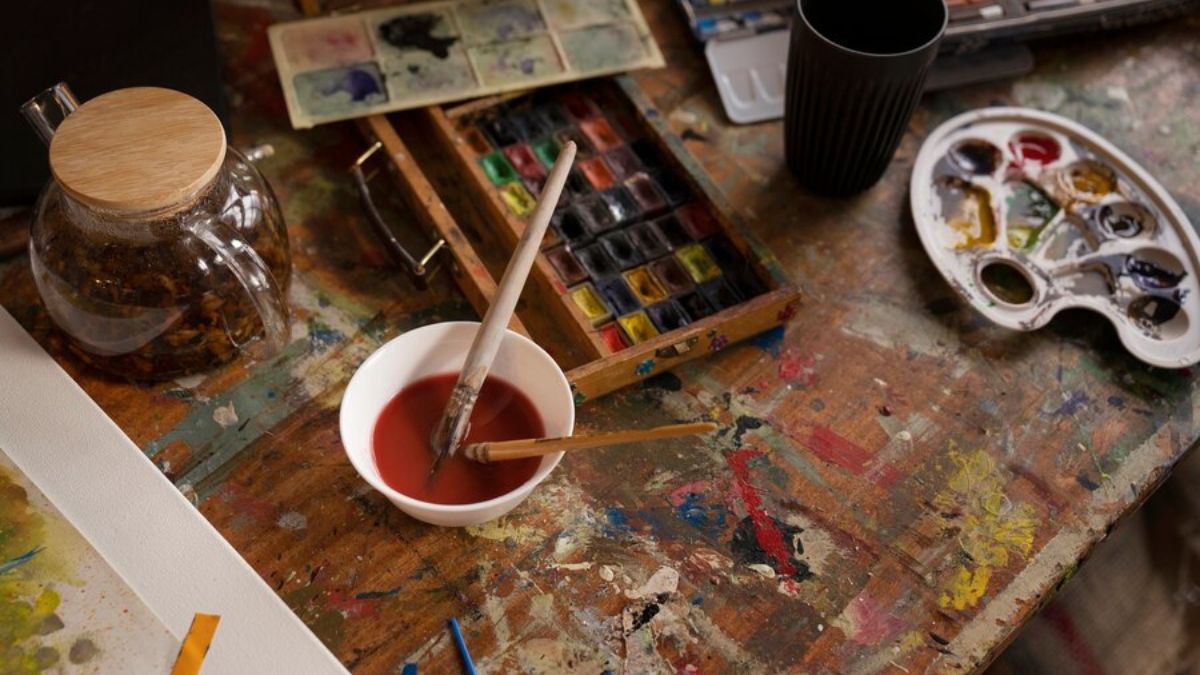Introduction
In the complexity of contemporary art, Kari Kinnaslapi shows himself as an innovator who equals the thousands-year experience of lapis lazuri inlaying with the contemporary views. Her work in particular can serve as an opportunity to have a look at the possibility of contemporary discourse and to comprehend how people objectively express themselves. Information in this blog post provides a closer look to Kinnaslapi’s work with particular focus on her artistic direction, her processes, and her contributions giving insight on how she navigates between the dualism of tradition and contemporaneity in her works.
A Journey Through Time
Further, the profile of Kinnaslapi as an artist involves striking balance between traditional sense and the new bids the Eskimo culture holds. Having grown up in a culturally endowment region, she was brought up with traditional art forms as part of her key social determinants. It would prove crucial to her learning process because it made the young artist have a very strong respect for the roles of tradition and aesthetics within what was, in essence, the creation of art.
However, there were no limitations to viewing the artistic Kinnaslapi vision as archaic only. He also understood that modern society needs art that would capture its essence which can be achieved only with contemporary art. In an attempt to marry old world skills to new world accomplishments, she intended to produce pieces that are relevant to today’s society, yet timeless.
Artistic Philosophy
Techniques and Materials
Then functional materials are combined with aesthetic and ergonomic characteristics for the artwork. Kinnaslapi makes sure that the techniques used align with the objective. Sometimes she uses batik cloth, ceramics, and wood in her creations. But also actively uses acrylics, mixed media and digital technology.
One of the procedures that Kinnaslapi’s distinctive features are the diffused geometric patterns & symbols. Many of these tend to be based on the traditional patterns although she puts her own spin into them. In her works, she attempts to integrate more historical approaches with contemporary technologies that would help her produce aesthetically great and philosophically placed art pieces.
Donations to the Art World
All in all, the art world has benefitted from Kinnaslapi, in many ways. Lo’s work has often been presented in galleries and museums across the world. And she has come under a lot of appreciation for the way she creates her art. It is this that has made her a luminary in the world of contemporary art, her harmonization of tradition, and the contemporary world.
Cultural Narratives: Wearing the carpet of Identity
Cultural beliefs include anyulative beliefs that give explanation to occurrences within the society, folk stories, folktales, myths, legends and trends among others. It is about the common elements by which we stitch ourselves into the fabric of who we are and who we may become. Cultural stories may be expressed by means of fables, sagas, epic, novels, songs and dances, movies, plays, paintings, and drawings, and other typical and universal forms of social communication and Interpersonal interaction.
The Power of Stories
There are different types of narratives that can help to motivate, teach something new and, of course, give a touch of emotion. He can enlighten us on cultural history, culture beliefs and culture values. They can enable us to learn how different cultures and people perceive things or event. They can influence how we see the world and the people that we are.
Thus, cultural narratives contain concepts that represent general views of the specific society. They can tell us what a certain sub-culture values – be it family, honor, or community. They can also enable us to appreciate what a culture went through and what it achieved.
Types of Cultural Narratives
There are many different types of cultural narratives, including:
- Myths and legends: They are kinds of stories that usually feature use of supernatural characters or incidences. They can be used to describe natural occurrence, or to inculcate morality among people.
- Folktales: These are the stories that are told, or retold, from one generation to the next. Their representatives are depicted as having powers, or animals possessing extraordinary abilities are shown.
- Fairy tales: Such are the stories which are perhaps based on fairy-tales and entails magical statutes or happenings. They are usually utilized in teaching young people the difference between the two concepts. That is between being good and being evil.
- Historical narratives: These are stories that are informed by history of which the traditional account of people. And their ancestors are part and parcel. It means that they can be serving as the tools which will allow us to learn about the past. And which we can use as a means of comprehending the present.
- Personal narratives: These are narratives that are real life accounts. They can give us a way to get to know people and to understand them.
The Role of Culture as a Reminder
Cultural materials are usually a part of a cultural story. They assist us in relating to who we were and who we are today. It also enables us to promote our culture and thus preserve our tradition and values.
Disappointingly, a large number of cultures’ stories are endangered. Increased globalization may replace the traditional cultures of societies. Ensure that we take cultural narratives so that we can pass them to the next generations since they have valuable lessons that can actually be learnt.
FAQs
- What is Kari Kinnaslapi’s artistic philosophy?
The inspiration, which lies at the base of Kinnaslapi’s art, is based on belief that, artistic productions enable bridging the generational gap and preserving culture.
- What is the whole methodology employed by Kari Kinnaslapi in their work?
Kinnaslapi applies natural threads, ceramics. And wood and combines these with modern materials such as acrylics, mixed media, and digital technology.
- What role do patterns, symbols play in the concept in Kinnaslapi’s works?
- What good has Kari Kinnaslapi done the art world?
Kari Kinnaslapi has brought a lot to art through her artworks being among the first to approach art in a different way. Her work has had drawing in numerous galleries. Art museums all over the world have highly praised it for its ability to reconnect with tradition and contemporariness.
Conclusion
Kari Kinnaslapi is the great visionary artist who did not only ever successfully combine conventional artistic methods with the contemporary outlooks. What is more, her work provides a perspective into interaction between past. And present and makes one contemplate more about the whole spectrum of human creativity. In reconciling tradition and the modernity Kinnaslapi has produced art that is timely and timeless. She will remain a role model for the art world. And her art works will create a thrilling feeling that will make people feel good for generations.



